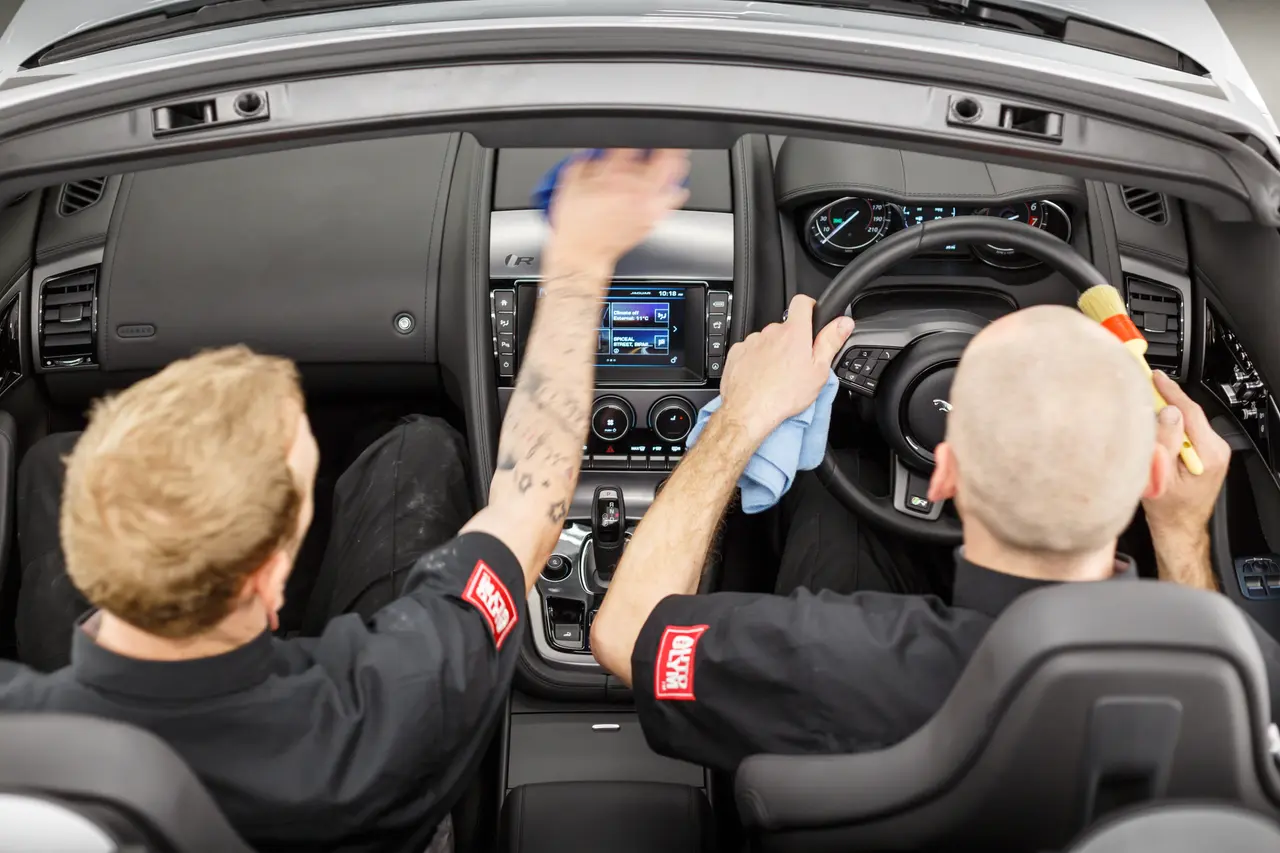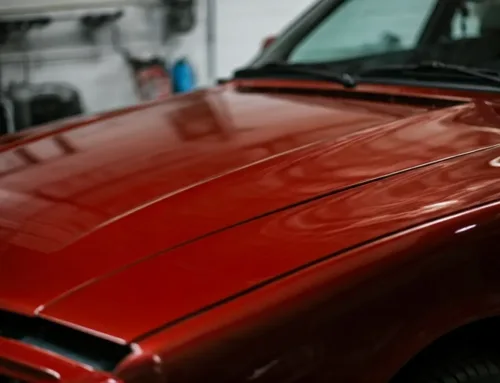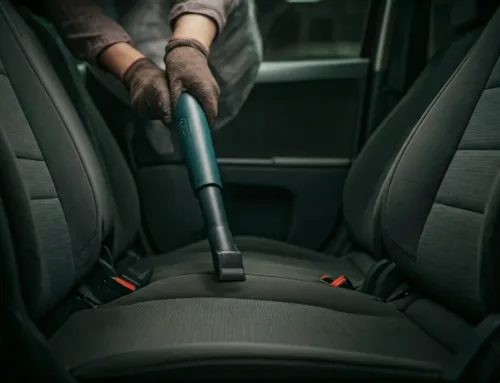Introduction to Interior Detailing
When you think interior detailing, you might picture a shiny, fresh car that smells like new. But there’s more to it than a quick vacuum and wipe down. Interior detailing is all about deep cleaning and protecting the inside of your car, sometimes even bringing it back to showroom condition. Some folks mistakenly believe it’s just an extravagant add-on, not essential. That’s far from the truth. Regular interior detailing can extend the life of your car’s interior, from the dashboard to the carpets, and improve your car’s overall value. It’s not just about making your car look good for a day or two; it’s an investment in your ride’s longevity and your comfort.
Myth 1: Interior Detailing is Just a Quick Wipe Down
Think interior detailing is just wiping surfaces down with a rag? Think again. It’s way more than that. Interior detailing involves deep cleaning every nook and cranny of your car’s inside, not just a once-over with a cloth. We’re talking about vacuuming carpets, conditioning leather seats, cleaning vents, and much more. This process ensures your car isn’t just clean to the eye but hygienic too, removing dust and allergens that can cause health issues. So, next time you hear someone saying interior detailing is simple, you know they’re skipping the details. It’s about giving your car the full treatment, not just a superficial clean-up.
Myth 2: All Cleaning Products are Suitable for Interior Detailing
Not all cleaners are your car’s friend. Imagine slathering your seats with a cleaner that’s more suited for your bathroom tiles. Sounds off, right? That’s because it is. Different materials inside your car require different care products. For example, leather demands a cleaner that won’t dry it out or crack it, whereas your dashboard and other plastic components need a solution that won’t leave them sticky or glossy in an unappealing way. Using the wrong product can not only make your car’s interior look bad but can also lead to damage over time. Always check the label and, when in doubt, opt for products specifically designed for automotive interiors. It’s the safer bet for keeping your ride looking sharp.
Myth 3: Interior Detailing Can Be Done Perfectly at Home
Many folks reckon they can tackle interior detailing just as well at home as the pros. That’s a tall tale. Sure, you might clean your car’s inside, but achieving the meticulous clean a professional can deliver? That’s a stretch. Professionals have the tools, products, and techniques that the average Joe lacks. They reach into the nooks and crannies we overlook or can’t get to. Then there’s the issue of products. The market’s flooded with cleaners and detailers, but not all are suited for your car’s specific materials. Use the wrong one, and you could end up damaging the interior instead of sprucing it up. So, while giving your car’s cabin a once-over with a vacuum and wipes might make it look clean, it’s not even close to the deep clean and protection a pro provides. Trust the experts; they’ve got this down to a fine art.
The Importance of Professional Interior Detailing
Many think a quick vacuum and wipe-down is enough to keep a car’s interior clean, but that barely scratches the surface. Professional interior detailing makes a world of difference. It’s not just about a spotless look; it’s about maintaining the value and health of your vehicle. Professionals dig deep, cleaning and conditioning every nook and cranny, from the dashboard to the air vents. They use specialized tools and products that you likely don’t have lying around, ensuring every part of your car’s interior is not just clean but sanitized. A regular professional detail can prevent wear and tear, keeping surfaces from aging prematurely. Plus, imagine getting into a car that smells and feels like new every time. That’s peace of mind money can buy. Sure, professional detailing costs more upfront, but it saves you money by preserving your car’s interior, potentially increasing the vehicle’s resale value. So, don’t skimp on interior detailing. It’s not an indulgence; it’s an investment in your car’s longevity and your satisfaction.
Tools and Techniques Used in Professional Interior Detailing
When it comes to getting your car’s interior detailed by professionals, they use a mix of tools and techniques you might not have at home. First off, they’ve got high-power vacuums. These aren’t your usual household vacuums. They’re way stronger, getting all the dirt and crumbs out of every nook and cranny. Next, they use steam cleaners. These babies can lift stains and sanitize surfaces without harsh chemicals, making them a favorite. Professionals also have special brushes and cleaning solutions specifically designed for car interiors. These are gentle on your car’s fabrics and hard surfaces but tough on dirt. They also use air compressors to blast out dirt from tight spots, like those annoying gaps between seats. Plus, they have techniques up their sleeve, like how to clean without leaving streaks on your windows or how to apply protectants that make your interior look new and last longer. It’s not just about the tools; it’s knowing how to use them right.
How Often Should You Get Your Vehicle’s Interior Detailed?
Most people think getting your car’s interior detailed is an annual thing, a once-in-a-blue-moon luxury. Not true. The sweet spot for keeping your ride looking fresh and extending its life? Every 4 to 6 months. Why so often? It’s simple. Dirt, dust, and spills don’t know how to take a break. They love making your car’s interior their home, leading to wear and tear over time. Regular detailing keeps these unwanted guests in check. Plus, if you’re frequently driving, have kids, or pets, you might even want to lean towards the 4-month mark. Bottom line, think of interior detailing as maintenance, not luxury. It keeps your car looking good, feeling fresh, and can even save you money by preventing bigger cleanup jobs or damage down the line.
The Cost vs. Benefit of Interior Detailing
Many think interior detailing is just an extra expense. But, let’s break it down: paying for interior detailing might seem like a lot upfront, but it actually saves you money in the long run. How? Well, regular detailing keeps your car’s interior in top shape, preventing wear and tear. This means less money spent on fixing or replacing things inside your car. Plus, a well-maintained car has a higher resale value. Think about it, would you pay more for a car that looks and smells like new inside? Exactly. So, while you might spend some cash now on detailing, the benefits, from saving on repairs to boosting your car’s value, clearly outweigh the costs. And let’s not forget, driving in a clean, fresh interior makes every trip more enjoyable. So, it’s not just about the money; it’s about the experience, too.
DIY Interior Detailing Tips and Tricks
When it comes to DIY interior detailing, everyone has their tricks. Yet, not all tricks work as promised. Here’s the straight talk—simple, no-nonsense advice to make your car’s interior sparkle without breaking the bank. Firstly, ditch the fancy cleaners; a mild soap and water solution does wonders for most surfaces. Use a microfiber cloth to avoid scratches. Second, don’t underestimate the power of a toothbrush for those hard-to-reach spots. It’s perfect for digging out the grit from seams and around buttons. Vacuum regularly, but be gentle. Aggressive vacuuming can harm fabrics. For leather, invest in a good conditioner. It keeps the leather soft, preventing cracks and tears. Remember, sunlight is an enemy to your interior. Use sun shades to protect the dashboard and seats from UV damage. Finally, tackle smells at their source. Baking soda is a great deodorizer—sprinkle it on carpets and fabric seats, let it sit, then vacuum it up. DIY detailing is all about regular care; a little effort goes a long way in keeping your car’s interior looking fresh.
Summary: Key Takeaways on Interior Detailing Myths Debunked
Interior detailing myths can really throw you off track. First off, steam cleaning isn’t always the best for your car’s interior. It matters what materials are in your car. Leather? Be extra careful with steam. Next, using any cleaner you’ve got lying around is a bad move. Your car’s interior needs safe, specific products. Harsh chemicals? They’ll only do harm. Another myth busted is that a shiny dashboard equals a well-maintained one. Nope, that’s often just greasy residue that actually attracts more dust. And, vacuuming isn’t just a quick once-over job. It’s crucial for preventing wear and tear, especially in those hard-to-reach areas. So, remember, interior detailing is more than just surface level—it’s about using the right techniques and products to protect and maintain your car’s interior efficiently.









Leave A Comment